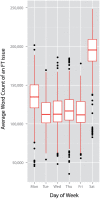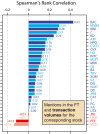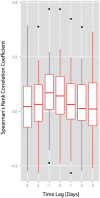Quantifying the relationship between financial news and the stock market
- PMID: 24356666
- PMCID: PMC3868958
- DOI: 10.1038/srep03578
Quantifying the relationship between financial news and the stock market
Abstract
The complex behavior of financial markets emerges from decisions made by many traders. Here, we exploit a large corpus of daily print issues of the Financial Times from 2(nd) January 2007 until 31(st) December 2012 to quantify the relationship between decisions taken in financial markets and developments in financial news. We find a positive correlation between the daily number of mentions of a company in the Financial Times and the daily transaction volume of a company's stock both on the day before the news is released, and on the same day as the news is released. Our results provide quantitative support for the suggestion that movements in financial markets and movements in financial news are intrinsically interlinked.
Figures






References
Publication types
LinkOut - more resources
Full Text Sources
Other Literature Sources

